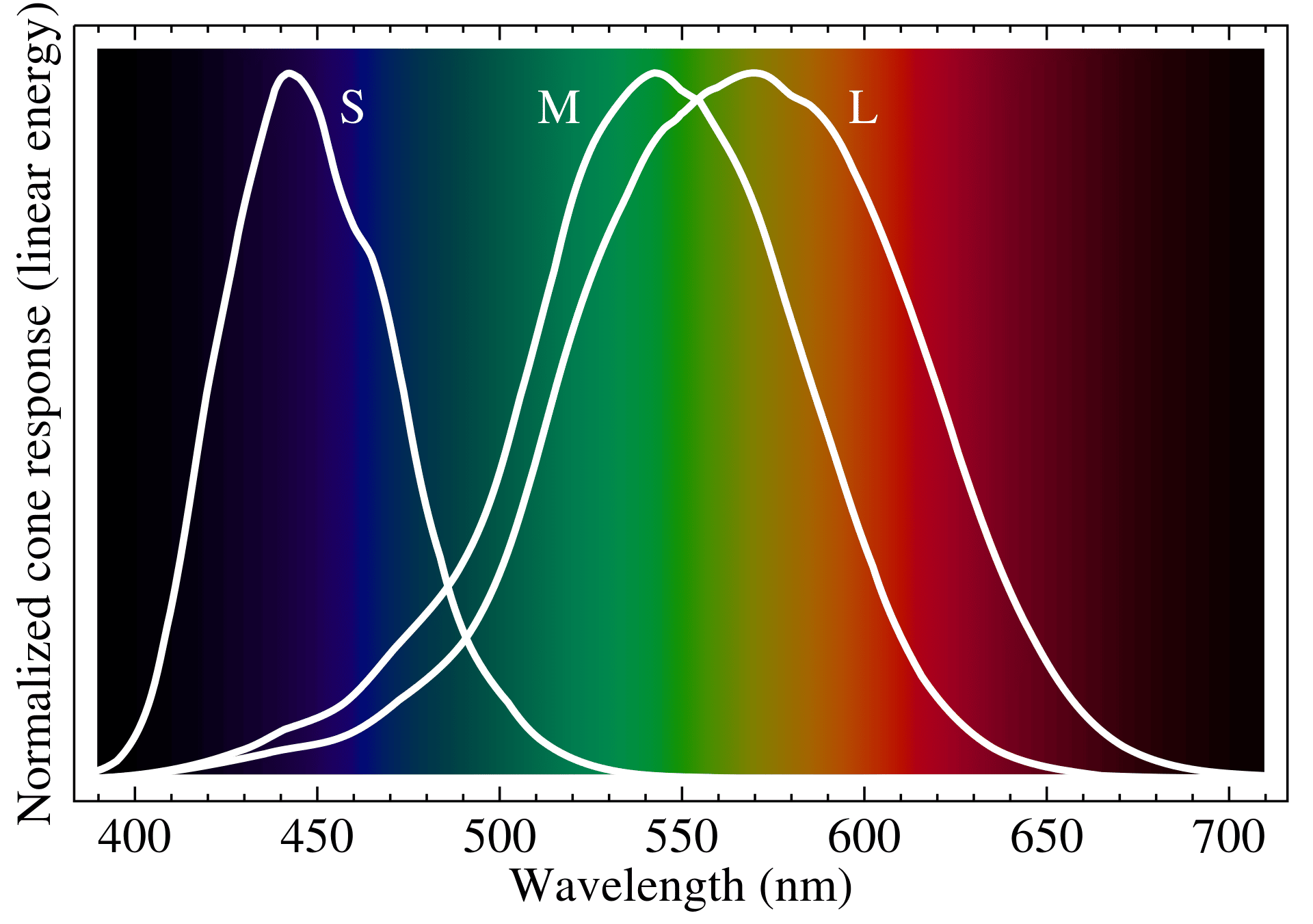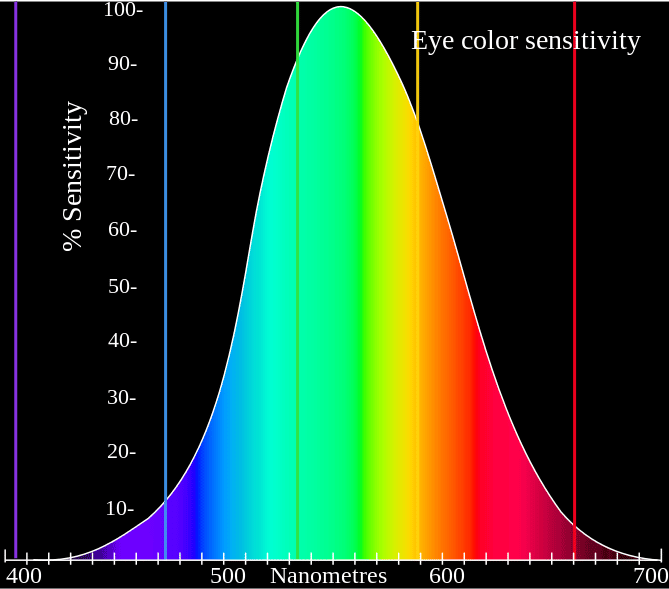Human Eyes Colour Sensitivity

Rod cells in the retina of our eyes give the ability to see light and give us our night vision when light levels are low, but rod cells cannot distinguish colour.
Cones cells, located in the centre of the retina (in an area called the macula), are not much good at night, but do let us perceive colour during daylight conditions. Cones are sensitive over a wide range of wavelengths, but our eyes are most sensitive to wavelengths near 555 nm – in the green region.
All the other colours that we see result from the stimulation of combinations of red, green, and blue cone cells. There is no cone cell for yellow – it is due to green and red cones working together.

Illustrated below is what we should expect to see – based on our having three cone cells?

Rod cells have their peak sensitivity at 498 nm, roughly halfway between the peak sensitivities of the blue and green cones.
The retina is multi-layered, and the signals end up at the ganglion cells and it is the differences (colour opponency) between the signals from the cone cells that is significant and contains the important information that is taken to the brain! In the retina we have rods and cones in the outer layer, they wire up to the inner nuclear layer consisting of two different types of cells called bipolar cells and horizontal cells, and they wire to each other, but also to the different types of ganglion cells of which there are currently 37 recognised types.
